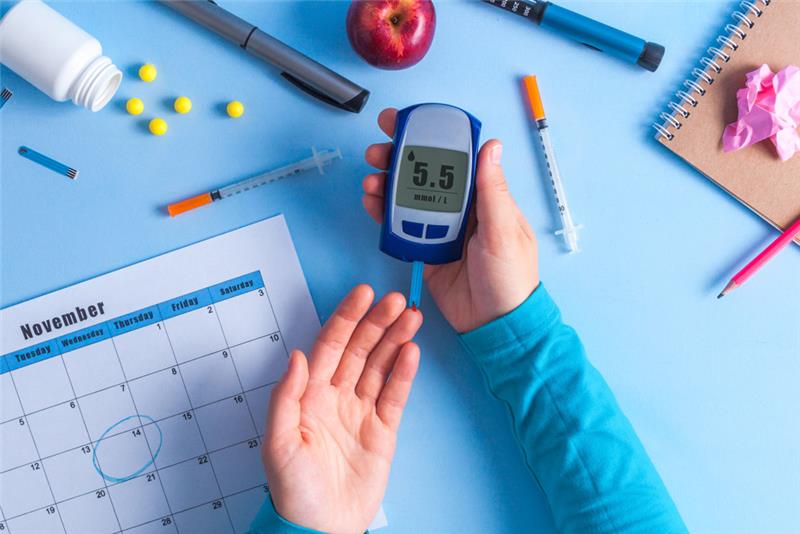

Blood sugar monitoring is a cornerstone of managing diabetes and maintaining overall health. Blood sugar, or glucose, fuels the body’s cells, but when its balance is disrupted, it can cause serious health problems. The frequency of checking blood sugar varies depending on the type of diabetes, treatment plan, and personal health factors. Monitoring regularly allows better control over glucose levels, helping to avoid dangerous highs and lows.
The Importance of Keeping Track of Blood Sugar
Glucose levels naturally change throughout the day, influenced by factors like meals, physical activity, stress, and medications. For individuals with diabetes, these fluctuations can be more pronounced and require closer observation. Regularly tracking blood sugar helps identify patterns, guide treatment adjustments, and prevent complications such as nerve damage, eye issues, kidney problems, and heart disease.
Without timely monitoring, blood sugar imbalances might go unnoticed until they cause symptoms or serious health risks. This makes consistent checking essential for effective diabetes management.
Common Methods to Monitor Blood Sugar
The most widely used method is self-monitoring with a glucometer, where a tiny drop of blood is tested to provide immediate results. Another increasingly popular option is continuous glucose monitoring (CGM), which uses a sensor placed just under the skin to continuously measure glucose levels, providing detailed insights throughout the day and night.
In addition to daily tests, the HbA1c blood test is used periodically to understand average blood sugar control over several months. While this test doesn’t replace daily monitoring, it gives a broader picture of how well diabetes is managed.
How Often Is Testing Necessary?
The recommended frequency of testing depends on many factors. People with type 1 diabetes generally need to test more frequently — often several times daily — since their insulin requirements can change rapidly. Frequent testing helps in making precise insulin dose decisions and avoiding unexpected blood sugar swings.
For those with type 2 diabetes, especially when managed by diet or oral medication, testing may be less frequent. Some might test once daily or a few times per week to ensure levels remain stable. During times of illness, increased physical activity, or medication changes, more frequent checks may be needed to maintain safe glucose levels.
What Influences the Testing Schedule?
Several elements affect how often blood sugar should be checked. The type of diabetes and treatment approach are key considerations. Insulin users often require more regular monitoring. Pregnancy, particularly gestational diabetes, calls for close glucose surveillance to safeguard both mother and child.
Lifestyle factors, such as changes in diet or exercise routines, also influence the monitoring schedule. In addition, individuals who notice symptoms like excessive thirst, fatigue, or dizziness should increase testing to quickly address potential problems.
Age, other medical conditions, and overall health status might also dictate personalized testing routines to meet individual needs effectively.
Tips for Efficient Monitoring
Maintaining a consistent testing schedule can help identify meaningful trends in blood sugar levels. Common times include before meals and at bedtime. Some may also benefit from checking glucose two hours after eating to understand how foods impact their levels.
Keeping a detailed record, whether on paper or via digital apps, helps track progress and provides useful data to healthcare providers. Ensuring proper hygiene and using well-calibrated equipment are important to obtain accurate readings.
It is also important to avoid excessive testing, which can cause unnecessary stress or discomfort. Finding a balance tailored to personal health goals and advice from healthcare professionals is the best approach.
When to Seek Medical Advice
Regular communication with healthcare providers is vital for managing blood sugar effectively. If readings frequently fall outside the target range or if new symptoms appear, consulting a doctor is important. Adjustments to medication, diet, or monitoring frequency might be necessary to regain control.
Symptoms such as sudden excessive thirst, frequent urination, blurred vision, or unexplained fatigue require immediate attention. Healthcare professionals can guide patients to optimize their testing routine and treatment plans.
Conclusion
The frequency of blood sugar monitoring should be customized based on the type of diabetes, treatment methods, lifestyle, and overall health condition. Regular testing is essential to maintain blood sugar within safe limits, preventing complications and promoting well-being. Collaborating closely with healthcare experts ensures a personalized and effective monitoring strategy that supports long-term health and quality of life.


